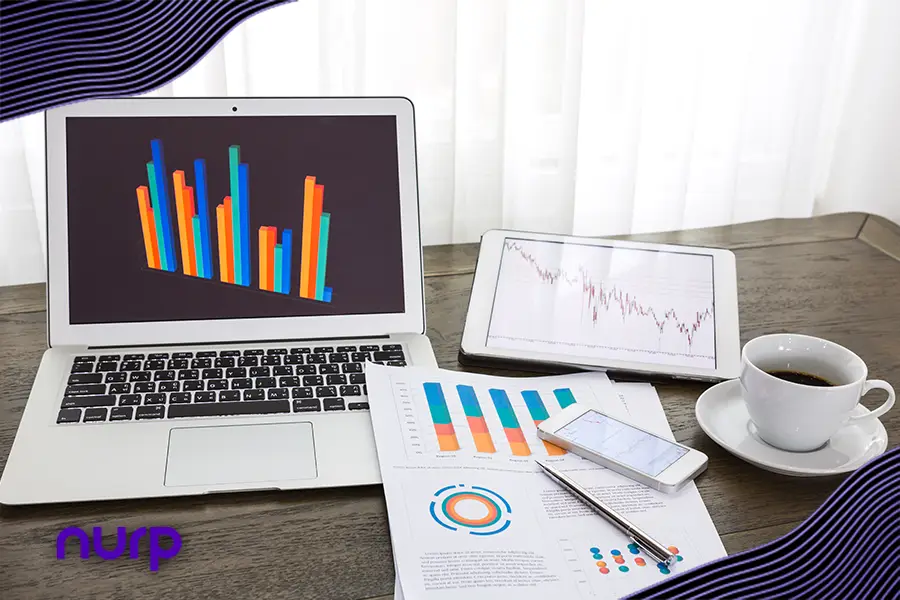The world of foreign exchange, or forex, is exhilarating, fast-paced, and constantly moving. The success of a forex trader largely depends on their ability to anticipate market movements — a task much easier said than done. This anticipation isn’t luck — it’s a craft that’s nurtured through careful analysis and monitoring of key economic indicators and geopolitical events that influence currency values. Here, we’re diving into ten metrics that can help you as a forex trader enhance your forecasts, reduce risks, and make more informed decisions.
Read More: From Wall Street to Main Street: Tech Democratizes Hedge Funds’ Strategies
1. Non-Farm Payroll Data
The Non-Farm Payroll (NFP) figures, released by the U.S. Bureau of Labor Statistics, measure the monthly change in employment across the country, excluding farm workers, general government employees, and private household employees. The release of NFP data is a significant event on the economic calendar, often causing substantial volatility across financial markets, including forex. A strong NFP figure might lead to a rally in the U.S. dollar, reflecting a robust economy with more job opportunities, whereas a weak NFP may indicate the opposite, causing the currency to depreciate.
2. Unemployment Rate
Closely associated with NFP data, the unemployment rate depicts the percentage of the labor force that’s currently unemployed and actively seeking employment. For forex traders, a lower unemployment rate often suggests a growing economy, which could lead to a stronger currency. Conversely, a higher unemployment rate can weaken a currency due to lower consumer spending and reduced business investments.
3. Consumer Price Index (CPI)
CPI is a measure of the average change over time in the prices paid by urban consumers for a market basket of consumer goods and services. It’s a crucial indicator of inflation and is used to adjust wages and salaries and benefit payments. In forex, high inflation could lead to a country’s central bank raising interest rates, making its currency more attractive to traders.
4. Producer Price Index (PPI)
PPI measures the average change in selling prices received by domestic producers for their output. An early warning sign of inflation, a high PPI can indicate that manufacturers are paying more for materials and components. If PPI begins to raise concerns about inflation, it may influence the decision-making of forex traders, pushing them towards hedges against currency depreciation.
5. Gross Domestic Product (GDP)
GDP is a broad measure of the nation’s overall economic activity and production, which constitutes the total market value of all goods and services produced within the country. Forex traders evaluate GDP growth rates to assess the relative strength or weakness of a country’s economy. Higher than expected growth can enhance the value of a currency in the forex market, while lower growth rates can have the opposite effect.
6. Interest Rates
Interest rates are significant drivers of forex trends. Central banks adjust interest rates to either encourage or curb economic activity. Higher interest rates make holding a currency more attractive, which tends to increase its value. Conversely, lower interest rates decrease the relative value of a currency. Traders keep a close eye on interest rate announcements and decisions, particularly those made by the U.S. Federal Reserve, the European Central Bank, the Bank of England, and the Bank of Japan.
7. Trade Balances
A country’s trade balance reflects the difference between the value of its exports and imports. It’s a key metric that forex traders use to gain insight into the country’s economic health. A positive trade balance, or surplus, could strengthen a country’s currency, while a negative trade balance, or deficit, might weaken it.
8. Government Policies and Regulations
Government policies, such as fiscal policies that control taxation and spending, and regulatory policies that set rules for financial markets, can significantly impact currencies. For example, a government’s approach to taxation and spending could influence a currency’s value through its impact on economic growth, inflation, and trade balances.
9. Geopolitical Events
Geopolitical events like wars, elections, political coups, and natural disasters can introduce significant volatility into forex markets. The uncertainty they create can cause sudden and substantial price movements. Being aware of, and prepared for, these events is crucial for forex traders to manage risk and capitalize on opportunities.
10. Central Bank Decisions
Central banks play a pivotal role in the forex market through their influence over interest rates, money supply, and, in some cases, currency valuation. Decisions made by central banks, particularly regarding monetary policy, can have an immediate and lasting impact on currency values and market sentiment.
Understanding and tracking these ten crucial metrics can give forex traders a competitive edge. By remaining informed about the economic and geopolitical landscape, you are better equipped to read market shifts and plan your trading strategy effectively. Remember, in forex trading, knowledge truly is power – and the right knowledge can make all the difference between a successful trade and a missed opportunity.
Click here to learn more about the forex market and how to navigate it!
The post 10 Crucial Metrics Every Forex Trader Should Keep Track Of first appeared on Nurp.com.








